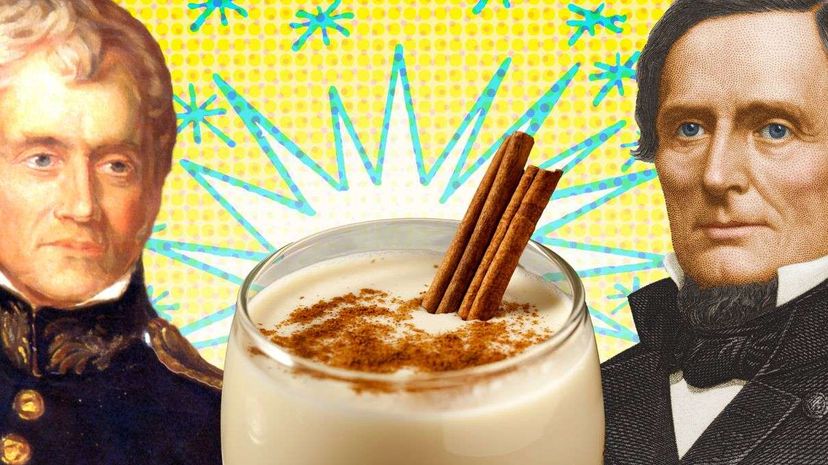When West Point accepted its first class in 1802, a mere 10 students assembled in a handful of haphazard buildings. New students interested in joining the ranks were admitted — at any time throughout the year — with few questions. Then came the War of 1812, and Congress, hungry for military success, installed Thayer to whip the academy into shape.
By 1826, Thayer had done just as he was commanded.
Until Christmas Eve, that is. That's when students broke out their secret stash of liquor: about four gallons of the cheapest whiskey they could find. They'd lugged it across the Hudson River and bribed a guard to bring it onto campus, where they hid it among their personal effects. Imagine: whiskey in boots, coat pockets, under mattresses and blankets, until the moment it was hastily mixed with eggs, milk and a few spices to become eggnog — the Colonial equivalent of a Jaeger Bomb. (Watch the video below for an idea of what might've been in the mix.)
"There are a lot of different theories as to how eggnog came about, but there's a solid consensus that Medieval Europe played a large role in its creation," says Cyrus Roepers of Arousing Appetites, a food blog focused on recreating traditional recipes from cuisines all over the world. "Many believe that eggnog is an offshoot of an old drink called posset, which is hot milk curdled with wine or brandy, and some added spices."
Originally, says Roepers, posset was the preferred drink of the Old World's 1 percenters. But it didn't take long before this beverage of wealthy nobility became popular with the average person and hopped continents. As non-nobles in the New World began owning land and livestock, they started using readily available ingredients, like milk, eggs and liquor, to whip up their own grog.
"Brandy and wine remained a European luxury, however, so Americans replaced it with the much more available, cheaper rum, thanks to their Caribbean neighbors," says Roepers.
And, as West Point cadets discovered, whiskey was an acceptable substitute, too.
